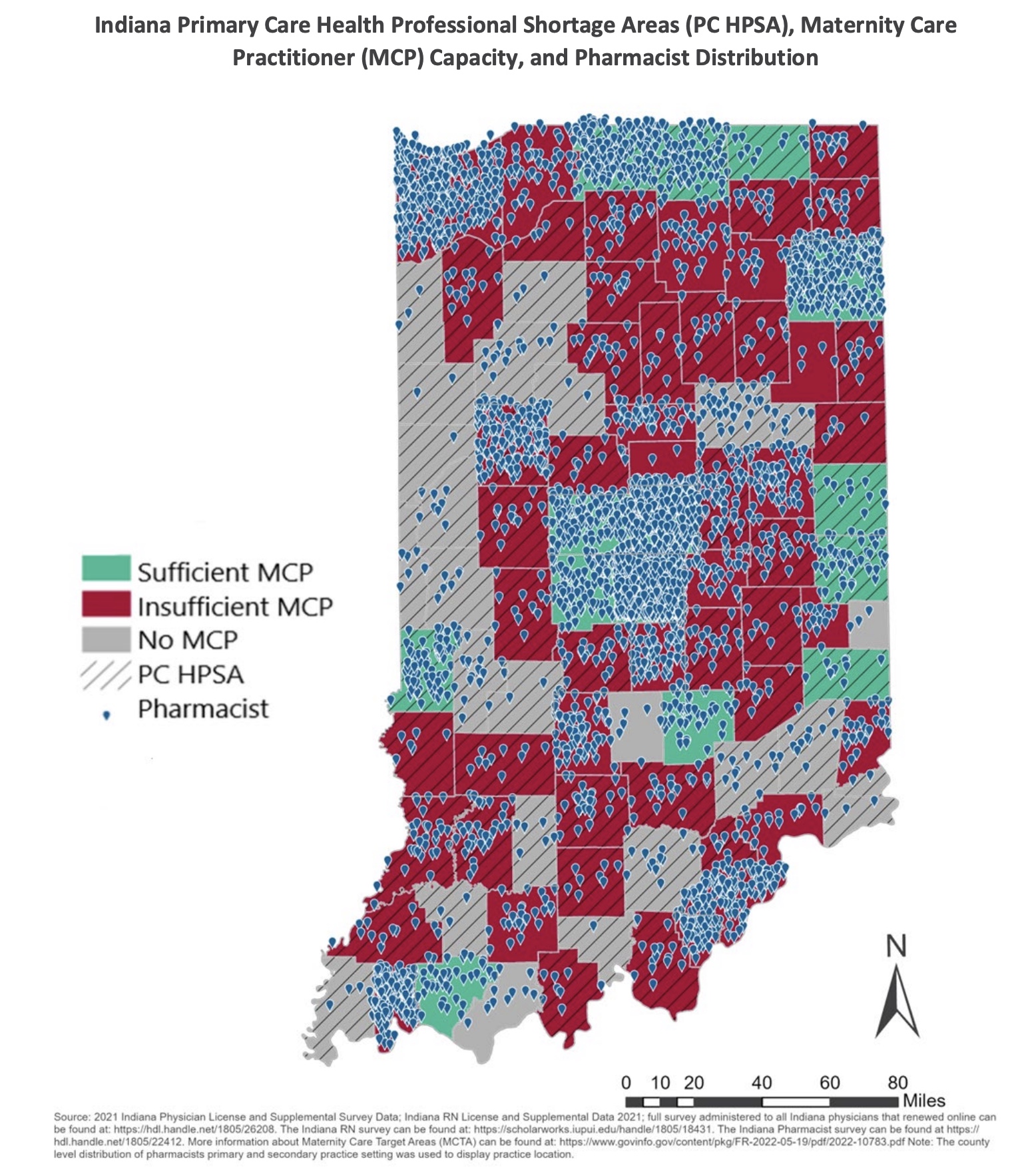
What’s Happening in the 2024 Legislative Session?
739
Total Bills introduced in Indiana’s 2024 Legislative Session
132
Total Bills identified with direct impact on health, health workforce or workforce included in the 2024 B4
32
Total bills identified with direct implications for health workforce & distinguished separately.
Top Health Workforce Themes in the 2024 Legislative Session
Let’s cut to the chase. What health workforce legislation has been introduced in the 2024 session? There were a few major themes that arose. We have conceptualized these themes and summarized the outcomes below.
Nursing Workforce
- This session has seen many legislative initiatives related to the nursing workforce. One such bill (SB 45) would establish additional training requirements in trauma-informed care for all licensed Registered Nurses (RN). One bill would modify certain licensure requirements for health facility administrators, allow NCLEX passage to satisfy English proficiency requirements for internationally-educated nurse applicants, and eliminate telehealth certification requirement for telehealth nurses and other telehealth providers (HB 132). The final nursing-focused bill making progress this session makes various changes to nurse licensing, education, and training regulations regarding requirements for clinical preceptors, and requirements for certain foreign nursing applicants (HB 1259).
- Bills under this theme that were introduced but did not progress include: a bill removing the collaborative practice agreement with physicians and APRNS, and allows a APRN with prescriptive authority to prescribe a schedule II substance (HB 1059); a requirement for nurses to complete implicit bias training as part of their continuing education requirements (HB 1167); establishment of nurse staffing councils within hospitals in order to develop nurse staffing plans (HB 1015); allowing Certified Registered Nurse Anesthetists to administer anesthesia under the immediate presence of a podiatrist or dentist, which is currently only allowed under the presence of a physician (HB 1371).
EMS
- There have been several bills introduced regarding Hoosier emergency medical services professionals (EMS) this session. HB 1142 would establish a program of recognition for first responders killed or injured in the line of duty. A new grant pilot program was introduced in SB 10 for the purpose of assisting in the costs of mobile integrated health care programs and mobile crisis teams across Indiana. Finally, SB 142 would require healthcare coverage for mobile integrated healthcare and emergency medical services for all state employees on the state employee health plan (and other insurers).
- Bills under this theme that were introduced but did not progress include: HB 1118 would establish a program to support the mental health of first responders through the Indiana first responders mental health wellness fund and program.
Regulatory Changes
- House Bill 1214 would add Indiana to the Dental and Dental Hygienist Licensure Compact.
- Bills under this theme that were introduced but did not progress include: A bill proposing the expansion of eligible clinical experience supervision to include physicians, and psychologists for the Clinical Social Work Licensure and expansion of supervision through telehealth (SB 261); bills that would establish new licenses – Professional Music Therapists (HB 1103) and Naturopathic Physicians (SB 262); and a bill (SB 110) that would add Indiana as a member of the Social Work Compact.
Behavioral Health Workforce
- A bill proposed in the House would allow a Social Worker licensee applicant to take the social worker examination during their last term of a program that meets educational requirements, and provides a letter of good standing from the director of the academic department (HB 1138). This bill would allow a student to sit for their professional exam early if all requirements in the bill are met. House Bill 1238 would add certain physician assistants and advanced practice nurses as potentially qualifying professionals to serve as competency evaluators in criminal proceedings (previously only psychiatrists and psychologists).
- Bills under this theme that were introduced but did not progress include: SB 166 which would have allowed community mental health center staff to provide social work services without a license and remove examination requirement for BHHS temporary permits; SB 261 which would have expanded the qualifications for clinical experience supervisors for clinical social workers and expanded tele-supervision.
Other health workforce themes from legislators that didn’t make it to the second chamber:
Health Workforce Incentives
- There were a few bills related to health workforce specific incentives, including a bill that would establish a medical school loan forgiveness pilot program (HB 1175). Another bill would establish an Indiana rural hospital and critical health care services fund, new health workforce student loan repayment program, and associated health workforce advisory board (advisory board (HB 1196).
There’s More on the B4!
One way we monitor health workforce trends is by tracking Indiana health workforce legislation through implementation of the Bowen Bi-Weekly Bill Brief or “B4.” There are many other health and workforce/education-related bills that have been introduced this session. Check out the full B4 to learn more about those bills and keep track of the active bills as they progress through the second half of session!








